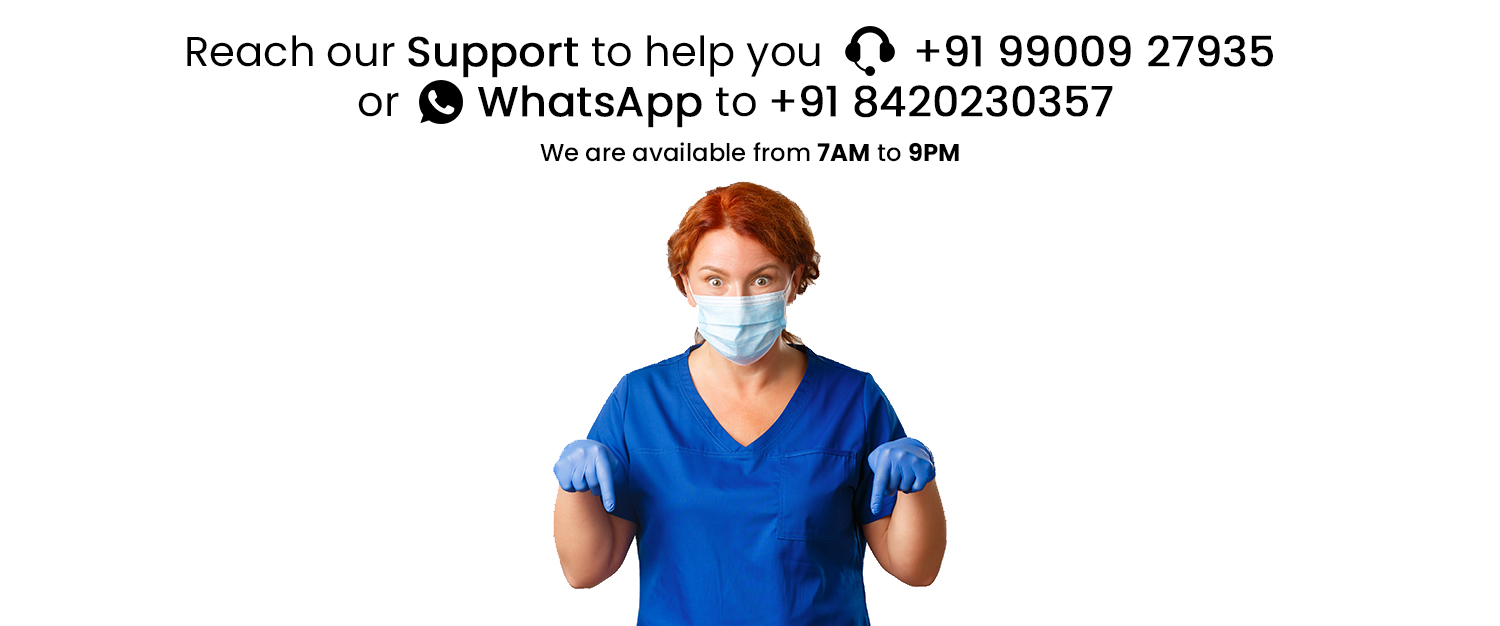

HIGHLIGHTS OF
INTERNATIONAL CONFERENCE ON
CLINICAL INNOVATIONS
2ND & 3RD DEC, 2022
A hybrid conference that brought together like-minded professionals and facilitated an exchange of mutually beneficial ideas, at an individual level as well as to mankind as a whole.
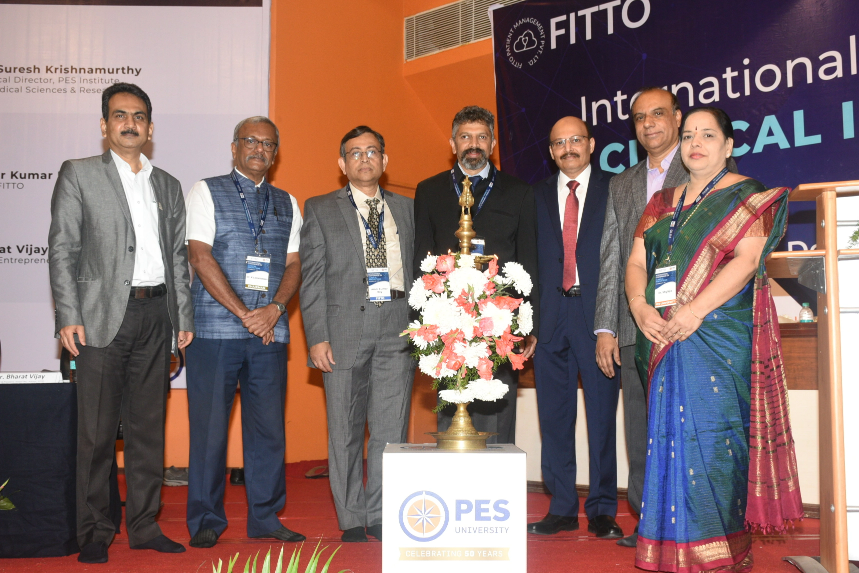
ABOUT
CONFERENCE
Be it the use of convex lenses to create a microscope for identifying bacteria or the application of a galvanometer to the heart, that gave rise to the modern day ECG, technology and healthcare have always gone hand-in-hand. The COVID-19 pandemic has shown doctors how technology can be used at every step from diagnosis and investigations to treatment of patients. FITTO and PES University had co-hosted an International Conference on Clinical Innovations 2022 to celebrate the union of Healthcare and Technology, by bringing together a group of like-minded peers to discuss the advancements in the specialties of Internal Medicine, Obstetrics and Gynaecology, Oncology, Orthopaedics and General Surgery. We sincerely hope our efforts will ignite the fuel for modern research, not just on this occasion, but for years to come.

Bharath Vijay
Serial Entrepreneur & Advisor, FITTO

Amar Kumar Ray
CEO, FITTO

Dr. Suresh Krishnamurthy
Medical Director, PES Institute of Medical Sciences & Research

Dr. K Lakshman
MBBS, LRCP, MRCS, FRCS

Dr. Suryaprasad J
Vice Chancellor, PES University
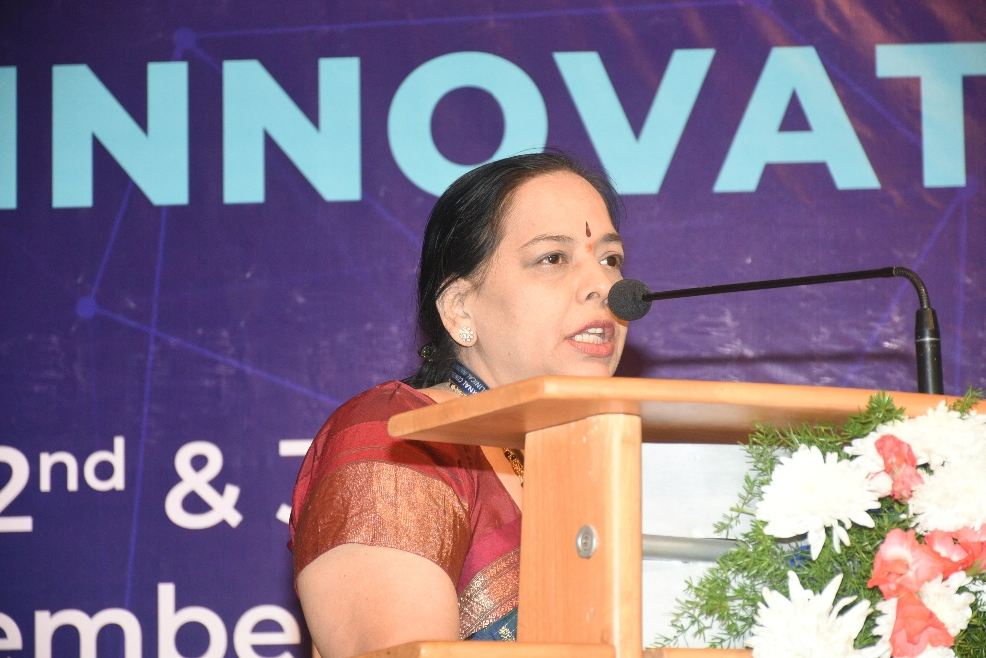
Dr. Shylaja S S
Chairperson, Dept. of CSE, PES University
Bharath Vijay, an advisor for FITTO, welcomed the guests, delegates, and team members to the International Conference of Clinical Conference, which was held at PES University in Bengaluru. He thanked PES University for their support and expressed appreciation for the presence of all the guests, both in person and online, from around the world.
Amar Kumar Ray discussed how medical sensors and machine learning can be used to create healthcare associates that can assist healthcare professionals in their work. These associates could be designed to help healthcare professionals be more efficient and effective, for example by using sensors to monitor patients’ health and using machine learning algorithms to interpret the data and provide insights. One specific example of this is the use of a CRT (cardiac resynchronization therapy) device to assist doctors in diagnosing and treating heart conditions. Overall, the use of medical sensors and machine learning has the potential to make significant improvements in healthcare by providing healthcare professionals with new tools and insights that can help them provide better care to their patients.
Dr. Suresh Krishnamurthy spoke about the use of mhealth, telemedicine, artificial intelligence (AI), and sensors in the healthcare sector. He discussed the value of digital healthcare, which is projected to be worth 200 million USD by 2022. He also highlighted the challenges of fragmented healthcare systems, and the need for a unified health record for every individual. Dr. Krishnamurthy discussed India’s National Digital Health Mission, which aims to provide a unique health ID for every citizen, and emphasized the importance of preventive healthcare. He discussed the potential of technology to help address chronic diseases, such as through the use of software without hardware for drug addiction treatment. He also discussed the emerging field of precision medicine, which uses genetic information to tailor medical treatments to individual patients. He discussed the importance of quality in healthcare, and the role of AI in healthcare, including its potential to proactively address diabetes. He emphasized the need to follow ethical, sustainable, and equitable approaches in healthcare.
Dr. K Lakshman’s emphasis on social responsibility and social innovations in healthcare highlights the idea that healthcare is not just about treating individual patients, but also about addressing broader societal issues that impact health and well-being. This could include addressing social determinants of health, such as poverty, inequality, and access to education and healthcare, as well as developing innovations that can help improve the health and well-being of communities and populations. Examples of social innovations in healthcare could include initiatives that aim to improve access to healthcare for underserved populations, or programs that promote healthy lifestyles and prevent chronic diseases.
Dr. Suryaprasad J discussed the need for social profiling in healthcare data in order to improve the quality of care that patients receive. He suggested that taking a history of an individual’s social profile could help healthcare professionals better understand their needs and provide more personalized and effective care. He also emphasized the importance of collaboration between different disciplines, such as lifesciences and engineering, in order to develop integrated solutions that can help address healthcare challenges. He highlighted the need for solutions that can reach everyone, regardless of their location or circumstances, and compared this to the principle of leaving no child behind in education. Dr. Suryaprasad also discussed the challenges posed by the COVID-19 pandemic, and the need for healthcare systems to adapt in order to provide effective care.
Dr. Shylaja SS expressed her views on the International Conference of Clinical Innovations and wished all participants the best for the conference. As the chairperson of the Department of Computer Science and Engineering, she emphasized the importance of collaboration between technology enthusiasts and healthcare professionals in order to advance the field of healthcare. She believes that such collaboration will be a great advantage for the future of healthcare.
OUR
SPEAKERS

Dr. Sujata Rane
Chief Manager, Health Management, Siemens Ltd., India
Occupational Health – Past, Present & Future
Dr. Sujata Rane explained the importance of occupational health (OH) in industries and the role of an Occupational Health Physician. The doctor lamented that it was often a generally ignored discipline. She touched upon the deadliest of diseases such as Coal Workers Pneumoconiosis, Silicosis and Byssinosis that were prevalent once. Dr. Rane also presented the sorry state of OH in India, by using statistics that showed that 17% of occupational health cases were contributed by India alone. She was optimistic that employees’ wellbeing would be better monitored with Industry 4.0 since it had more controls, in the form of IOTs and smart PPEs .
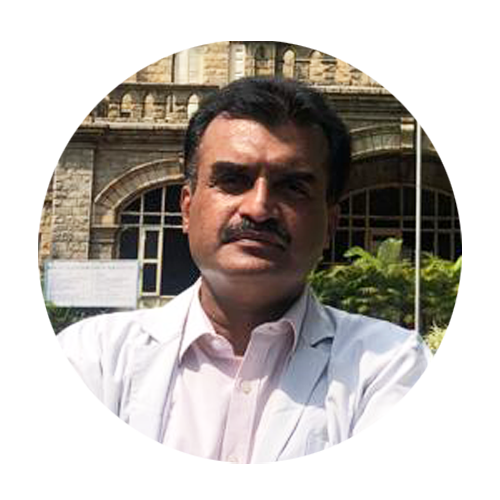
Dr. Nagaraju G
Prof. and HOD, Minto Ophthalmic Hospital, affiliated to Bangalore Medical College and Research Institute
AI in Ophthalmology: Emerging Trends
Dr. Nagaraju G stressed upon the need for an increased usage of Artificial Intelligence(AI) in ophthalmology since there were not many eye care providers to the ageing population. Ophthalmology, he said, was mostly instrument driven and therefore clinical decisions relied heavily on images. The eye specialist brought out the differences between a simple application of AI to a more complex Deep Learning(DL). He summarised his presentation by stating that the use of DL, coupled with telemedicine, may be a long term solution to screen and monitor patients in a primary care setting
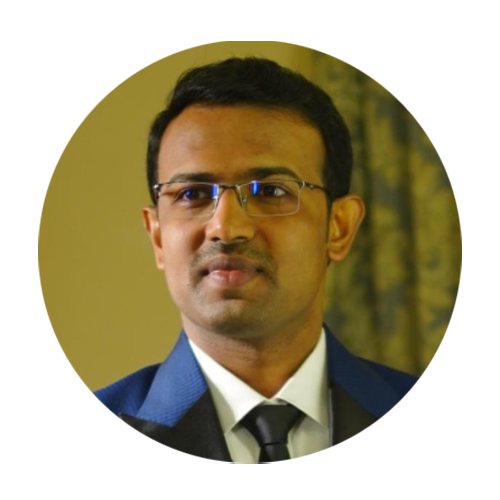
Dr. Arjun Prakash
MD, DNB, (FRCR) Department of Radiodiagnosis
Bangalore Medical College & Research Institute
Role of Artificial Intelligence in Medical Imaging: An insight into the future
Dr. Prakash started his presentation with a brief introduction to the various equipment being used in Radiology to diagnose diseases. The radiologist stated that the clinical adoption of AI had increased to 30% in the past seven years, according to a study by the American College of Radiology. He mentioned that because of the capacity of the AI models to simulate intelligent behaviour, many radiologists are concerned that they would be replaced by computers, but what could happen is that they could be assisted vastly by AI models.

Dr. Narmatha Elango
MBBS, MS – Obstetrics & Gynaecology, Fellowship in Reproductive Medicine
Infertility Specialist, Reproductive Endocrinologist (Infertility)
Recent advances in IVF industry
Dr Narmatha briefed the audience about the advancements that had been made in In Vitro Fertilization ever since the test-tube baby days. The gynaecologist also talked about the shift in paradigm From Cleavage Stage Embryo Transfer To Blastocyst Transfer, Fresh Embryo Transfer To Frozen Embryo Transfer and Functional Uterine Receptivity (ERA). She looked forward to an Ovarian Hyperstimulation Syndrome(OHSS) – free world. Dr. Narmatha explained how AI was being used in Cryo-Robots.

Mr. Ebenezer Sundaraj
Head of IT & Chairman, Computer Sub committee
Christian Medical College, Vellore, Tamil Nadu
Revolutionizing Healthcare in CMC Vellore
Mr. Ebenezer gave an insight into the journey of CMC at Vellore, from its inception to its present establishment. The chairman of the Computer sub-committee elaborated on the development of an in-house Clinical Workstation and the Hospital Management System (HIS). He explained how the HIS was used from the stage of patient registration to the time of discharge. He revealed how the HIS was instrumental in increasing the efficiency at all levels of health care.

Mr. Shrikanth
Computer Sub committee
Christian Medical College, Vellore, Tamil Nadu
Revolutionizing Healthcare in CMC Vellore
Mr Shrikanth talked about the infrastructure that was being used at CMC Vellore and how it was developed. He presented facts and figures on the volume of work being done in a single day. High end firewall was also in place to handle upwards of 2000 simultaneous users.

Dr. Chandaran Gnanamuthu
MD, DM (Neurology)
Senior Consultant Neurology, Fortis Hospital, Bengaluru
IT in Healthcare – Future Possibilities
Dr. Gnanamuthu started off with a brief note on how Information Technology was currently being used in a typical clinical process. During the course of his talk, the highly regarded neurologist made the audience aware of how IT had influenced various medical disciplines like Robotic Applications, Organ Transplantation, Drug Development, Clinical Epidemiology, Epidemic Tracking and Vaccine Development.

Dr. Varun Sukumaran
MD MS FRCS
Plastic Surgeon – Dubai – UAE. Healthcare Entrepreneur
THE MISSING ROAD!
Dr. Sukumaran used the analogy of high-end automobiles to spell out the various categories of Clinical Innovations that have happened. He highlighted various healthcare problems that technology could solve but he also stressed the importance of regulatory adaptation for bringing technology closer to healthcare.

Mr. Balasubramanya Vasista
Program Director, RTWO Healthcare Solutions
Tele ICU
Mr. Vasista gave an insight into the integration platform his company had developed. This was vendor-neutral and device agnostic. He clarified that remote monitoring of patients’ vitals as well as data, in waveforms, was possible. Devices like, Monitors, Ventilators, Syringe Pumps, Incubators and even Heart Lung machines could be connected to his platform. The entrepreneur even presented some grim facts about high death rates occurring due to lack of ICU facilities and Proactive medical attention.

Athira J
Product development (R&D)
Bipha Drug Laboratories, Kottayam, Kerala
HPV BASANT- A Novel, clinically proven Herbal formulation for HPV
Ms Athira showcased the clinically proven herbal formulation remedy for Human Papillomavirus. She gave an introduction to the virus and some statistics about the population that was affected.
She shared details about the formulation, the ingredients that went into the formulation, the testimonials and reviews of patients that demonstrated the efficiency of the HPV BASANT.

Dr. Gowri Srinivasa
B.Engg (Computer Science, PES University)
Ph.D (Biomedical Engg., Carnegie Mellon University)
A machine learning understanding of sepsis
Dr Gowri began her presentation with a brief overview of sepsis, the pathogen and contextual features. She mentioned that sepsis was one of the leading causes of death in the world and that an early diagnosis of the condition was vital in an effective treatment plan for the patients. She proposed a novel two phase prognostic scoring system using machine learning to predict two complementary outcomes in sepsis patients – Sepsis Severity and Comorbidity Severity.

Dr. Moni Kuriakose
MD, FRCS
Medical director, Co-founder, CEO Kerela Operations, Karkinos healthcare, Mumbai, India
Professor and Vice Chairman
Dept of Head and Neck, Plastic and Reconstructive Surgery
Rosewell Park Cancer institute, Buffalo, New York
Implementation of Distributed cancer care model
Dr. Kuriakose described a distributed care model that would Integrate primary and cancer care units thereby improving access, with technology being the equaliser. He talked about the need for stratification of care based on resources and clinical needs. He stressed the importance of empowering the primary care centres for early detection as well as surveillance of cancer and that the secondary centres should improve cancer awareness plus introduce risk reduction strategies.
CHAIRMAN OF THE
CONFERENCE

Dr. K Lakshman
MBBS, LRCP, MRCS, FRCS
Shanti Hospital and Research Centre, Jayanagar
Journey in Laproscopy Era
Dr Lakshman is a a general surgeon with over 35 years of surgical experience. He is a forerunner in laprascopic surgery, and his special area of interest is Gastrointestinal Surgery. he is currently practising at Shanti Hospital & Research Centre, Jayanagar, Bangalore. His surgical specialty focuses on abdominal contents including esophagus, stomach, small bowel, colon, liver, pancreas, gallbladder, and bile ducts.Served as the convenor of the Scientific Committee of ASI-KSC. Presented several papers in various conferences on varied topic in Surgery, laparoscopy, HIV, Surgical safety and Computers in Medicine. Reviewer for Indian Journal of Surgery, Indian Journal of Surgical Oncology, British Journal of Surgery and BMC Surgery. He has Set up the Clinical Skills Centre at Bangalore Medical College as a part of the alumni association / development trust activity. He has also been Faculty in Surgical Gastroenterology, RGUHS. He has also been Instrumental in setting up the digital library, telemedicine facility and the seminar hall of the Alumni Association at Bangalore Medical College.
Dr. Laksman spoke about the transition of surgery from the 70s to the laparoscopic era, during the initial phase of which, the surgeons faced challenges, especially with the hand-eye coordination while using the hand instruments. The highly skilled and widely respected surgeon with over 38000 operations to his credit, stated how laparoscopy was different from the traditional open surgery. He also rued the fact that not many doctors were spending time in understanding the nuances of technology.
PANEL
DISCUSSION
Knee Replacement Surgery

Dr. PC Jagadeesh
MBBS, Diploma in Orthopaedics
DNB Orthopaedics Surgery
Dr. B L Prakash
MBBS MS (Ortho) DNB FAO (USA)
Senior Consultant Orthopaedic
& Joint replacement Surgeon
Dr. Raghu Venkatesh
MBBS, MS (Orthopaedics)
Arthroplasty fellow/Orthopaedic Surgeon
Fortis Hospital, Bengaluru
WORKSHOPS

Device based ECGs : from Pages to Patients
As the world evolves to accommodate technology into the healthcare sector, more and more devices that provide ECG tracings to the physicians, are now being launched in the market. While this apparently seems like a very easy solution, interpretation of these ECGs is slightly different from the standard 12 lead ECGs taught at medical colleges. In this workshop, FITTO has taken the responsibility of training young healthcare professionals to read and interpret device based ECGs correctly. The workshop was done using HD Steth, made by FITTO’s associate HD Medical. After a brief training session, an ECG quiz made the evening interesting and interactive.
CPR : not just a pump in the chest
Though Cardiopulmonary Resuscitation is one of the most important life-saving techniques for both medical and non-medical personnel, training of CPR is often neglected in India, especially amongst the non-medicos. During the International Conference on Clinical Innovations 2022, FITTO has risen to the occasion and arranged a hybrid workshop to train both young medical and para-medical students in Basic Life Support.


David’s Son’s Challenge
There is a huge difference between theoretical knowledge and practical experience. While the MBBS curriculum is evenly poised to help students understand and learn the basics of many diseases, it is never similar to a real-life experience of treating patients. Even while accompanying professors and seniors in the wards, students often get to know only a snapshot of the patient’s diagnosis procedure and treatment protocol. Others are often lost in follow-up because the student is allocated to a different ward by then. FITTO brings each student a chance to diagnose, treat and follow-up with their very own virtual patients.
From blood reports to examination videos, history taking to drugs, the David’s Son’s Challenge promised an exciting journey into the young doctor’s decision making skills. The challenge was a story similar to multiple choice questions. However, instead of the standard MCQ questionnaire where every question is from a different context, here it was the story of a single patient. Each choice took the student on a separate path.
We acknowledge the fact that in the practice of medicine, different paths can be chosen to reach the same outcome. Out of respect for this, our questions and choices were set such that the student could reach the diagnosis even if he/she has ordered an unnecessary test or focused on the wrong part of the history on a few occasions.
ABSTRACT
PRESENTERS

Pritik Shah
MBBS Final Year
BMCRI
Next Generation Sequencing(NGS) to analyze the cutaneous bacterial and fungal microbiome diversity in preterm neonates.
Mr Pritik illustrated the meaning and significance of the neonatal microbiome and how the preterm neonates were highly vulnerable to sepsis due to prolonged stay at neonatal intensive care units. His talk centred around the use of NGS as a clinically innovative tool in cutaneous microbiome profiling.
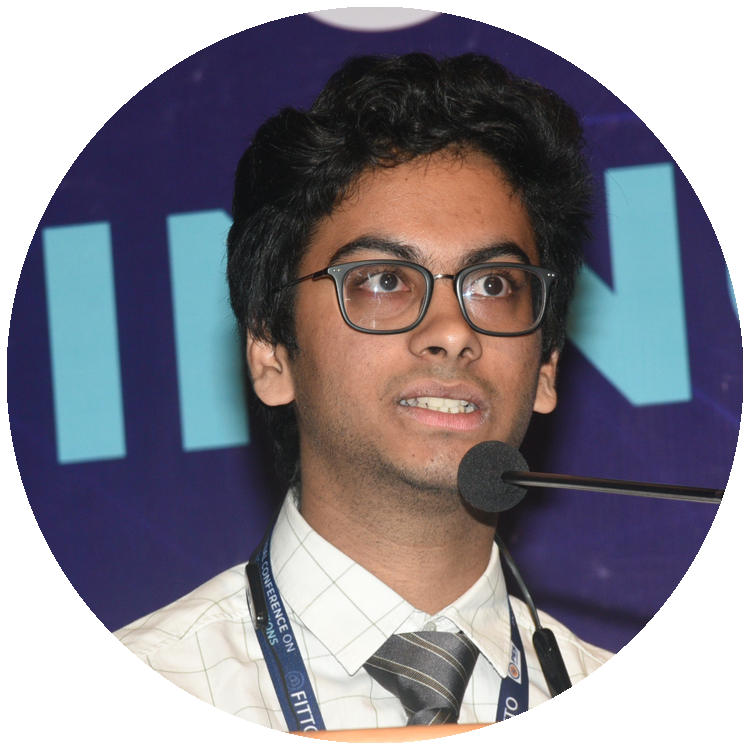
Shafeeq Ahmed
MBBS 2nd Year
BMCRI
Multi-Parametric Magnetic Resonance Imaging in the Clinical Diagnosis of de novo Glioblastoma; Innovation in Neuroradiological Evaluation
Mr. Ahmed elaborated on the method of trying to obtain an Ideal three-dimensional (3D) brain image by combining T2-weighted (T2WI), Diffusion weighted (DWI) and Dynamic contrast enhanced (DCEI) to evaluate clinical as well as radiological parameters of patients diagnosed with de Novo GBM and to evaluate the diagnostic accuracy and validity of mpMRI for de novo GBM.

Dr. Sayonee Das
MBBS, MD
KPC Medical College & Hospital, Kolkata
Dengue bradycardia
Dr. Sayonee brought the attention of the audience to the fact that Dengue fever was one of the world’s most severe emerging viral diseases. She said that its severity ranged from mild illness to Dengue Haemorrhagic Fever (DHF) & Dengue Shock Syndrome (DSS). She reasoned that the spectrum of conduction abnormalities in dengue fever was broad, ranging from bradycardia to life-threatening arrhythmias and that most electrocardiographic changes were transient and resolved without requiring any intervention. The gold medallist concluded by stating that awareness regarding electrocardiographic changes and their management in dengue patients would help in prompt & better decision-making for the patients.
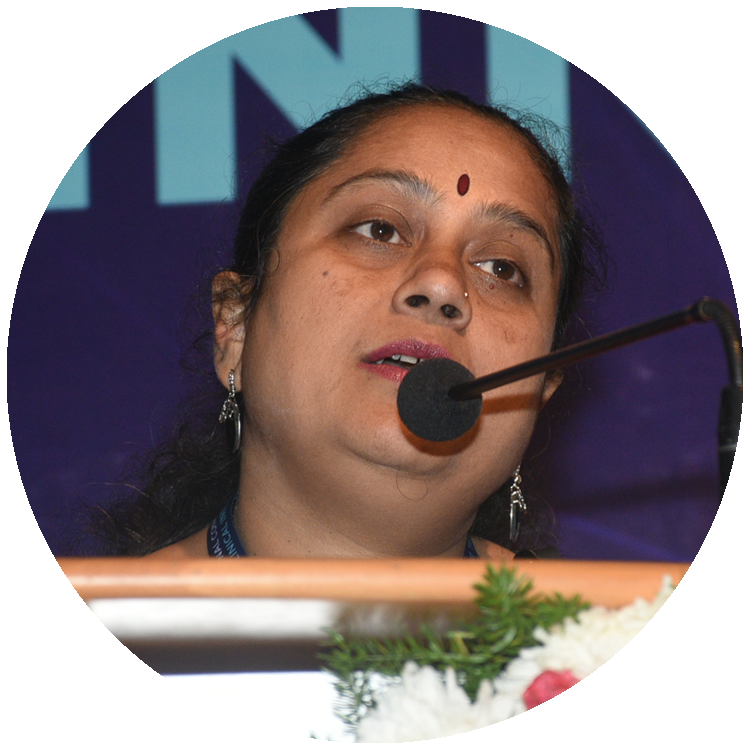
Dr Deepthi N Shanbhag
Department of Community Health
St. John’s Medical College
Improving access of children with disabilities to services using Tele- rehabilitation during COVID -19 – Experience of a Tertiary Care Hospital
Dr. Deepthi began by describing the concept of Telemedicine. She emphasised that there was an immediate need for door to door access to essential health care services. She won the audience’s hearts by showcasing how their team at St. John’s had ensured that children with disabilities had improved access to all the services during the COVID -19 pandemic, through telerehabilitation. The doctor gave details of how they were able to develop standard guidelines of a Tele-Rehabilitation model for adaptation in any health care setting. She also expressed her gratitude to the organisers for giving an opportunity to present their case study on the World Disability Day.

Dr. Saurabh Karmakar
Additional Professor,
Department of Pulmonary Medicine,
All India Institute of Medical Sciences, Patna.
Thoracoscope Conduit Innovated from Repurposed Consumables
Dr. Saurabh kick started the talk with challenges faced by advanced health care providers. He mentioned that substantial innovations in thoracoscopy had occurred over the past few years that allowed the pulmonologists/ respiratory physicians worldwide to perform less morbid procedures with better visualisation and diagnosis of pleural diseases. He believed that there was immense potential for the use of innovation in resource limited healthcare settings for effective diagnosis of pleural disease.
Dr. Deepthi N Shanbhag won the best presentation award at the conference for her presentation on improving access to services for children with disabilities using tele-rehabilitation during the COVID-19 pandemic. Tele-rehabilitation involves the use of technology, such as videoconferencing, to provide rehabilitation services remotely. This can be particularly useful for children with disabilities who may have difficulty accessing in-person services due to mobility issues or other challenges. The use of tele-rehabilitation can help improve access to services for these children during the COVID-19 pandemic, when in-person visits may be limited or restricted.


